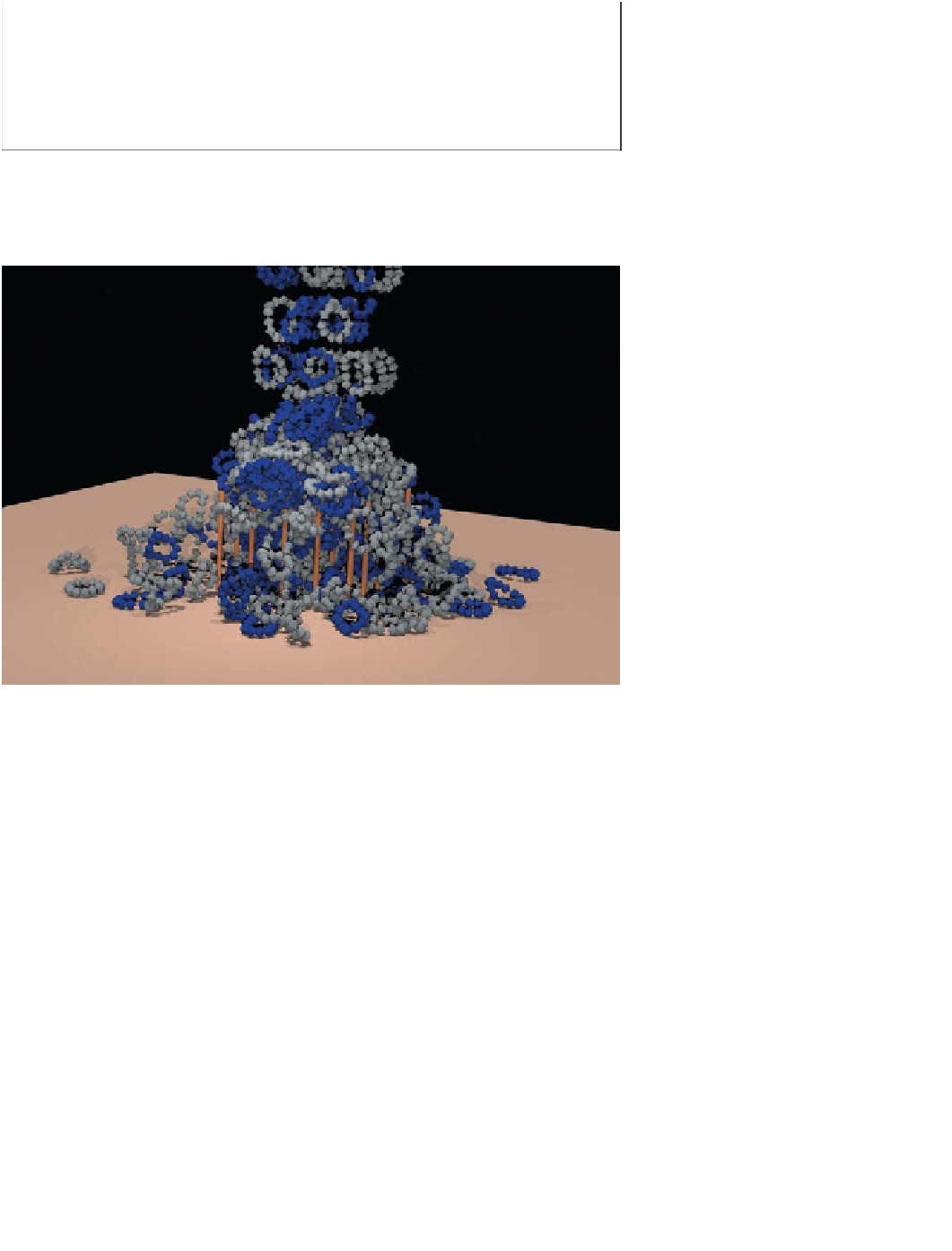Graphics Reference
In-Depth Information
Figure 35.2: A series of key poses extracted from dense motion capture data [SYLH10]
that have been visualized by rendering a virtual actor in those poses. (Courtesy of Moshe
Mahler and Jessica K. Hodgins.)
Figure 35.3: Hundreds of complex shapes fall into a pile in this rigid-body simulation of
Newtonian mechanics [WTF06]. This kind of simulation is leveraged extensively to present
“what if?” scenarios for both entertainment and engineering applications. The primary
challenges are efficiency and numerical stability. (Courtesy of Ron Fedkiw and Rachel
Weinstein Petterson, ©2005 ACM, Inc. Reprinted by permission.)
concerned with numerical integration of estimated derivatives; thinking deeply
about the underlying calculus should help you navigate the notorious difficulty
of achieving stability and accuracy in such a system. The techniques used are
related to several other numerical problems beyond physical simulation. Notably,
the integration methods that arise in dynamics serve as another example of the
techniques applied to the integration of probability density and radiance functions
in light transport.
There are many other ways to produce animations that are not discussed in
this chapter. Two popular ones are filtering live-action video (e.g., as shown in
Figure 35.5) and computing per-pixel finite automata simulation (e.g., Conway's
Game of Life [Gar70], Minecraft, and various “falling sand” games). Although
beyond the scope of this topic, both filtering and finite automata make rewarding
graphics projects that we recommend to the reader.


